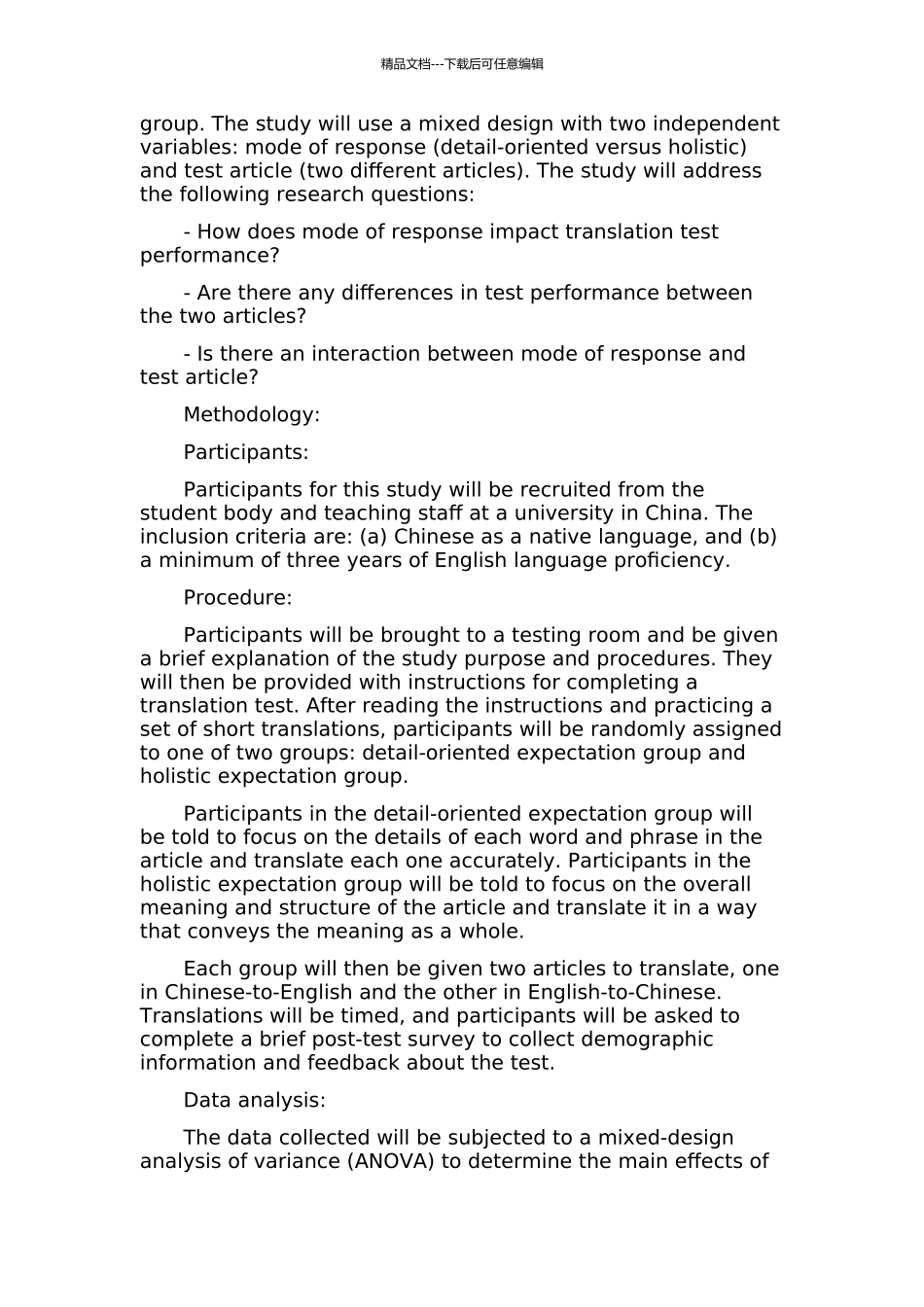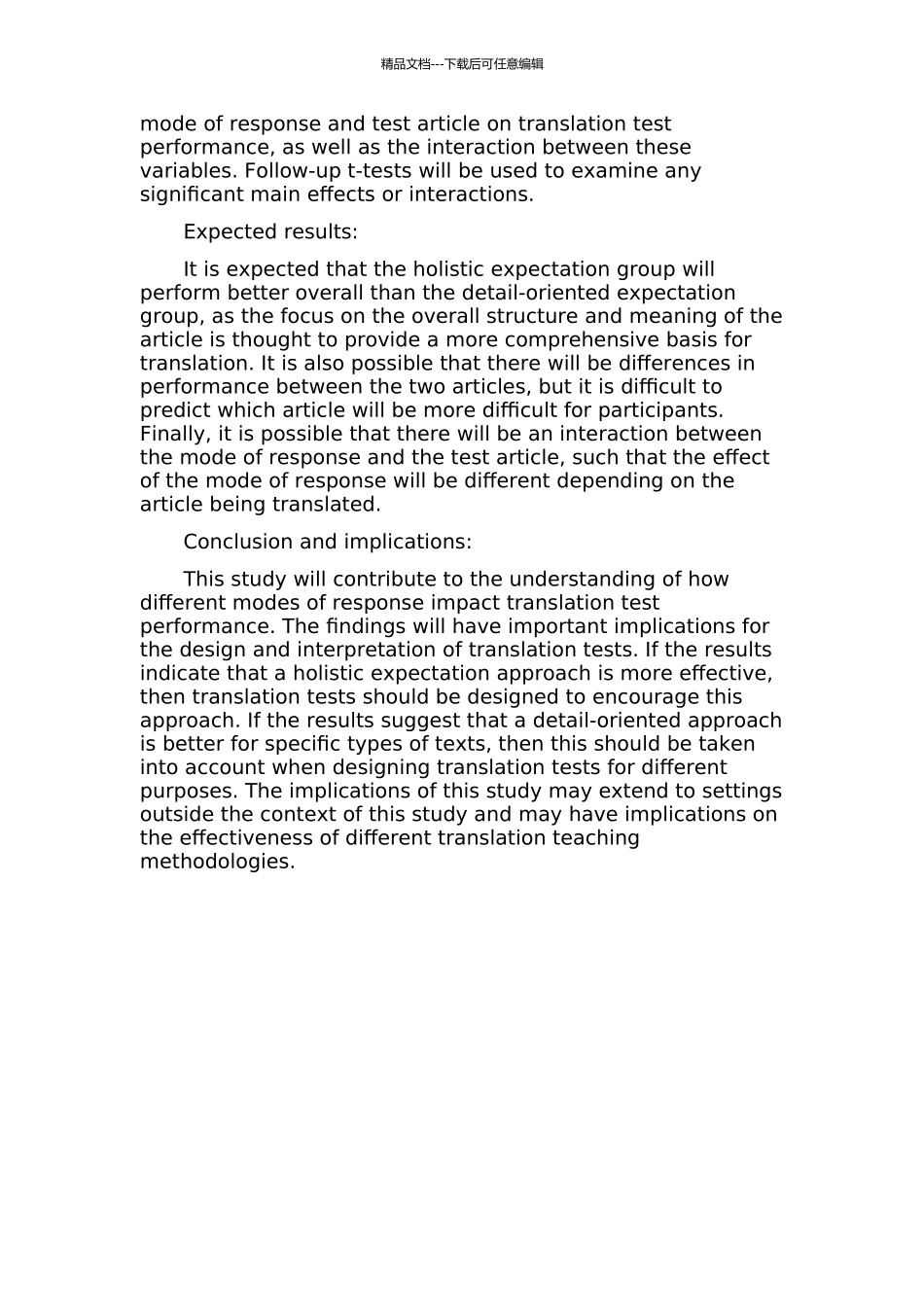精品文档---下载后可任意编辑不同期待作答模式对翻译测试成绩的影响的开题报告摘要:翻译测试是评估翻译能力的主要手段之一,但其结果可能受测试作答模式的影响。本讨论旨在探究不同期待作答模式对翻译测试成绩的影响。讨论将采纳混合设计,其中被试将首先接受一些指令和练习来熟悉测试和期待作答模式。然后,被试将随机分配到两组中:细节期待组和整体期待组。在细节期待组中,被试将被告知重点关注每个单词和短语的细节,而在整体期待组中,被试将被告知重点关注文章的整体意义和结构。被试将翻译两篇文章,一篇在细节期待组中,另一篇在整体期待组中。结果将使用方差分析和 t 检验进行分析。该讨论的发现有助于改进翻译测试的设计和解释成绩。关键词:翻译测试;期待作答模式;混合设计;方差分析;t 检验。Introduction:Translation is a complex task that requires a range of cognitive and linguistic skills. Translation tests are widely used to evaluate a translator's ability to accurately and efficiently convey meaning from one language to another. However, the results of translation tests may be influenced by the testing format and instructions provided to test-takers. One factor that may impact test performance is the expectation set by the test format, or the mode of response. Different modes of response may encourage test-takers to focus on different aspects of the text, which could influence their performance.Previous research has suggested that the mode of response can impact translation performance. For example, some studies have found that a holistic approach that focuses on the overall meaning of the text can lead to better performance, while others have found that a detail-oriented approach, focusing on individual words and phrases, can be more effective. However, there is still much to learn about how different modes of response impact translation test performance.Objectives:The purpose of this study is to investigate the impact of dif...


